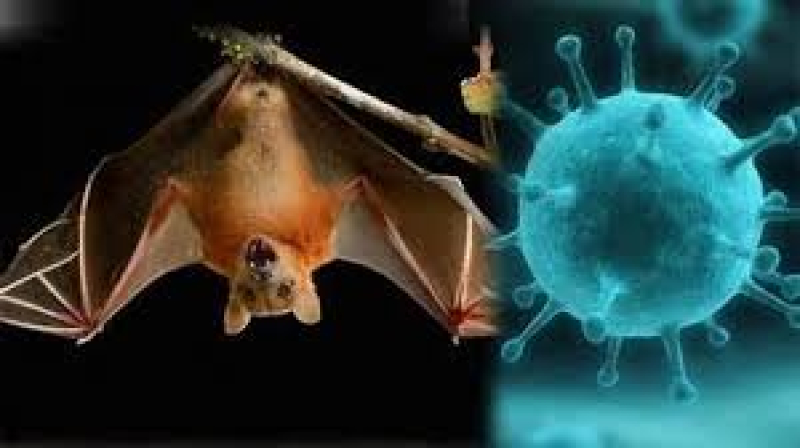- CEC Vows Credible Election to End Stigma |
- High-level meeting reviews country’s economic progress |
- Dhaka suspends visa, consular services at its Delhi, Agartala Missions |
- Govt to cut savings certificate profit rates from January |
- Gold prices hit fresh record in Bangladesh within 24 hours |
Containing an ever-present threat

As deforestation and other human-mediated effects on animal habitats continue to bring humans into close contact with previously isolated wilderness, the threat of emerging zoonotic diseases becomes ever-present. The ongoing outbreak of Nipah virus in Kerala, India provides the latest reminder.
Nipah virus is a recently emerged bat-borne virus found in South and Southeast Asia. Nipah virus infections cause many clinical manifestations in humans, from asymptomatic infections to acute respiratory infections and deadly encephalitis. Infection has a mortality rate of 40-75%, with no approved cure or vaccine, and treatment still mainly based on alleviating symptoms.
Fruit bats of the Pteropus medius family are the natural host of the Nipah virus. The virus was first identified in a large outbreak resulting in more than 100 deaths in Singapore and Malaysia in 1999. The next outbreaks occurred in Bangladesh and India in 2001. Since then, 339 human Nipah virus cases have been identified across more than 40 outbreaks in at least 34 districts in Bangladesh with a case fatality rate of 71%. The largest among these occurred in Faridpur in 2004, when 36 people were infected with Nipah virus -- of whom 27 died. Several outbreaks have similarly been reported in India over the same timeframe.
How the virus spreads
Over the last two decades, scientists at icddr,b -- often with international support -- characterized Nipah virus’s transmission routes, and brought together solutions from epidemiology, anthropology, and animal ecology to understand and combat the spread of the virus.
Epidemiologists discovered that consumption of raw date palm sap -- a highly popular local beverage -- was linked to Nipah virus infection, and subsequent surveillance of the feeding behaviour of local fruit bats near date palm trees revealed that they frequently visit date palm sap trees and contaminate raw date palm sap by licking, urinating, and soiling as it is being collected from the trees in clay pots overnight. Humans would then get infected from drinking the contaminated date palm sap. The investigators subsequently found that Nipah virus infection can occur through close contact with someone infected with Nipah virus, even if that infected person has already died.
In Bangladesh, a hospital-based sentinel surveillance system for Nipah virus has been implemented in 12 strategically chosen hospitals distributed across the country. Investigators and surveillance field assistants in the surveillance hospitals classify, register, and take samples from individuals with suspected Nipah-like illnesses daily. If any new case or outbreak is identified, icddr,b works alongside the government to quickly investigate and implement control measures. While these measures have been effective in saving many lives by containing and preventing the spread of the disease, the absence of approved treatments offer little hope for those who become infected.
Medication and treatment
During the recent Nipah outbreak in Kerala, the Indian government approved the use of a novel form of treatment called monoclonal antibodies. Monoclonal antibodies targeting the virus can attach themselves to a part of the virus and prevent entry of the virus into human host cells, effectively neutralizing it. While there have been no large scale trials on monoclonal antibodies, 14 individuals from USA and Australia have received the treatment following exposure to a similar virus to Nipah virus and none of them developed disease. Although it is difficult to establish whether any direct protection arose from the monoclonal antibody, the treatment appears to be safe. So, treatment with monoclonal antibodies during the early stage of Nipah infection, can be lifesaving.
Another drug known as Ribavirin, which is effective against a wide range of viruses, led to a 36% reduction in mortality among 140 patients who received it during the 1999 outbreak in Malaysia. Additionally, during the 2018 outbreak in Kerala, Ribavirin led to a 20% reduction in mortality, albeit this benefit was observed in a smaller group of only six patients. With the high frequency of outbreaks in Bangladesh, it is imperative that we consider employing similar measures to complement our current surveillance and prevention measures.
Due to its high mortality rate and the potential for the person-to-person transmission, the WHO has identified Nipah as a pandemic threat. To prepare for bigger outbreaks, early diagnosis, and treatment options such as monoclonal antibodies, broad-spectrum antivirals, as well as effective vaccines should be ready for rollout before they become necessary.
At present, icddr,b, and its collaborative partners are actively engaged in enhancing our understanding of Nipah virus and advancing the development of rapid diagnostic tests and vaccines to combat it. However, it is important to note that vaccine development can be a lengthy process. In the interim, emergency treatments could serve as a valuable and effective solution.

